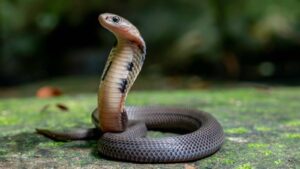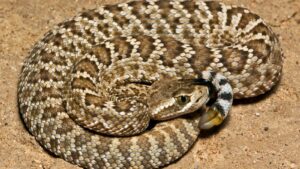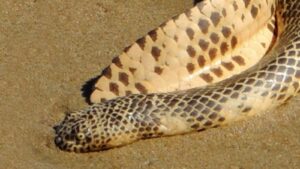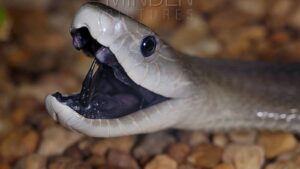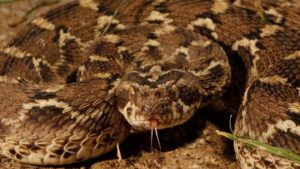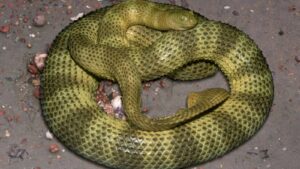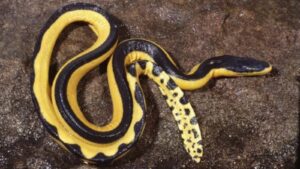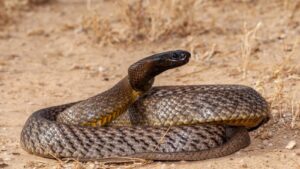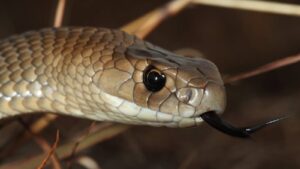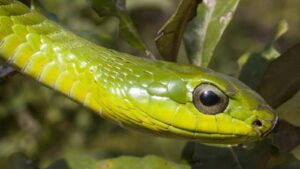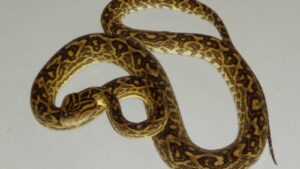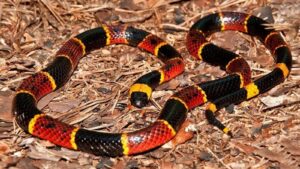Most venomous snakes in the world you won’t believe actually exist
Summary
Top 20 most venomous snakes in the world you won’t believe actually exist .Snakes are extremely feared in the animal kingdom because they are deadly. Some are capable of killing up to 100 men with just a single bite. From […]
Top 20 most venomous snakes in the world you won’t believe actually exist .Snakes are extremely feared in the animal kingdom because they are deadly. Some are capable of killing up to 100 men with just a single bite. From the black-mouthed mamba to the slippery viper, here are the top 20 most venomous snakes in the world.
Video: Most venomous snakes in the world you won’t believe actually exist
The Chinese cobra
Unsurprisingly found in most parts of southern China, the Chinese cobra is one of the most widely spread venomous snakes in China and Taiwan, and it’s also guilty of causing most snakebite incidences to humans. Even though its teeth don’t leave obvious marks and wounds, this creature is obviously highly venomous. Its venom is both cardiotoxic and neurotoxic, and in a single bite, it can inject 250 mg of venom. The cobra’s venom had a 15% chance of being lethal, but it’s easily manageable today if the victim gets the antivenom.
Video: Most venomous snakes in the world you won’t believe actually exist

©parqueecologicoimigrantes.org
Jararaca
Spending most of its time in the heavily populated areas of southeastern Brazil, the jararaca’s bite is a well-documented process that causes intense swelling, bleeding, and, in severe cases, death. The jararaca is responsible for 3000 cases of snake bites between 1902 and 1945 in Brazil, with around 25 deaths. However, with the dark side also comes the bright side; its venom has been used to develop angiotensin, drugs that convert enzyme inhibitors mainly used to treat hypertension and some congestive heart failures.
Mojave rattlesnake
This highly venomous pit viper species, whose bite is 10 times more toxic than any other rattlesnake in America, is commonly found in the deserts of central Mexico and southwestern United States. Its venom is said to be neurotoxic and hemotoxic, one of the world’s worst venoms! In high doses, this venom is very lethal, as it has the ability to either shut down your body or melt your insides. Researchers from Clemson University said that this can also depend on your location, and most victims have shown disorientation, blood clots, and nervous system paralysis.
White-lipped island pit viper
Despite its beautiful site, this snake, which was initially discovered within the Sunda Islands of Indonesia, is highly venomous and aggressive. This creature rules the streets of Berlin with a daunting number of venomous bites. They are mostly green in color but can also be white and even blue, and they keep their color for life. This creature should just be put under the ‘look but don’t touch’ category; it just shouldn’t be messed with under any circumstance.
Dubois’s sea snake
Found in the coast of the Indian Ocean in Australia, Papua New Guinea, and New Caledonia, the Dubois’s is ranked as the second most venomous sea snake, with data showing that it’s the one with the most potent venom among all the sea snakes around the world. When taken out of a subcutaneous injection LD50 test, the snake’s venom has a toxicity level of 0.044 mg/kg. Although most sea snakes are factually lethal and they rarely attack humans, they would, of course, bite if provoked.
The black-mouthed mamba
Dubbed the dangerous African snake by National Geographic, these snakes that live in and around the rocky savannah are widely feared for their swiftness during attacks and their extremely potent venom that has killed almost all of their victims. This animal can be very aggressive when provoked, injecting its neuro- and cardiotoxic venom into the attacker, and with no antivenom for this species yet, when attacked, death is the only option. This is a scary story, yeah?
The saw-scaled viper
What if you met the deadliest of them all? Scientists believe that the saw-scaled viper is at the forefront of most human fatalities, more than any other snake species. Due to its aggressiveness, the snake bites earlier and at a faster rate, and its venom is incredibly lethal in less than 10% of the untreated victims. The toxins of its venom can break down blood vessel membranes, destroying their ability to clot, leading to heavy bleeding. This scary true story just makes you want to keep off off off!
Peron’s sea snake
Just to name but a few, the Peron’s sea snake hails from many places, including the Coral Sea Islands, Taiwan, and the Gulf of Siam. Its venom reflects a value of 0.079 mg/kg upon subjection to the LD50 test. Unlike other sea snakes, it has spines on its head, thus also commonly referred to as the horned sea snake. Like most sea snakes, the Peron’s sea snake is very gentle and rarely aggressive, and the only time it gets into contact with humans is through activities like fishing. It completely avoids humans and will only bite when provoked. Now you know!
The yellow-bellied sea snake
With a black back and a yellow underbelly, just like its name, this rare-colored sea snake is highly venomous, and its venom contains myotoxins and neurotoxins, which are extremely fatal. It can rapidly ruin the skeletal muscles. Luckily this venom can be rectified by an antivenom. Much like other sea snakes, it’s rare for this yellow-bellied animal to get into contact with humans, not unless it swims up to the shore.
The inland taipan
Often referred to as the most fierce snake, the inland taipan is one of the amazing top ten most venomous snakes in the world, with a bite that can kill a human in less than an hour, thus considered to be one of the deadliest snakes on earth, whose venom causes paralysis and blood vessel hemorrhage within an hour. This South Australian reptile is a very sharp striker when provoked; however, it’s rather shy and non-aggressive. In reference to the facts, you may just need to keep off.
Read More: Rarest snakes in the world you won’t believe actually exist
Faint-banded sea snake
This is another incredibly venomous snake whose bite is more deadly than the inland taipan. Well, maybe these two should be among the top 5. Having said that, it is important to note that this sea snake that inhabits the Indian and Pacific Oceans rarely bites. Regarded as the most dangerous in the world, this sea snake is rather docile and has a rather timid temperament and would need a lot of stress and punishment before it attempts to bite. Its venom can take a person’s life in a few minutes.
The eastern brown snake
Born in Indonesia, Australia, and Papua New Guinea, this venomous snake has different shades of brown and can grow up to 3.6 to 5.9 feet in length. It feeds mainly on rodents and inhabits savannah woodlands, forests, and scrublands. Upon injection in human beings, its venom can cause dizziness, renal failure, diarrhea, and eventually death. The eastern brown snake is one of the leading snakes in snake bites and snake bite-related deaths in Australia.
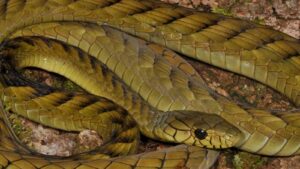
©africansnakebiteinstitute.com
The western green mamba
This is a long, thin, very nervous, alert, and extremely agile snake that lives mainly in the tropical rainforests and woodlands of western Africa. It is capable of navigating through trees swiftly and can also descend to the ground level to pursue prey such as rodents and small mammals. Similar to other mambas, the western green mamba is highly venomous, and its bite can kill humans in a short time if untreated.
The boomslang
This is the most venomous rear-fanged snake and large-eyed green tree snake. It is the most famous, highly venomous colubrid of Africa with a potent hemotoxic venom that can kill even an adult human. However, the discovery of an antivenom helps to prevent fatalities amongst its victims. Like many other arboreal snakes, boomslang is active in daylight and is a very secretive snake that lives close to people unnoticed. Who knows, maybe it has an IQ of its own!
The death adder
Native to Australia, the death adder is one of the most venomous land snakes in Australia and globally. It has the fastest bite in the world and can strike and return to its position in less than a tenth of a second. It releases between 40 mg and 100 mg of venom in a bite and may cause paralysis or death within 6 hours; however, its antivenom would successfully treat the patient. While it’s still widespread, unlike other species, the death adder is facing increased threat from increased cane toad invasion.
The black-banded sea krait
Famously known as the Chinese sea snake, this unique brand of sea snake inhabits the warm waters of the Pacific Ocean close to Indonesia, and they prefer the coral reefs. They feed mainly on fish and rarely attack humans.Their venom has a toxicity of 0.111 mg/kg when put under the subcutaneous injection LD50 test. They have a cylindrical body with 20-60 black bands that go from the neck to the tip of the tail. What do you think is the best way to describe these harmless sea animals?
The Philippine cobra
The Philippine cobra is a stocky and highly venomous species of spitting cobra native to the northern regions of the Philippines. It has long cervical ribs that are capable of expanding, so when threatened, it can form a hood. This snake is said to have more poisonous venom than any cobra species, and it’s able to spit the venom three meters away, which is almost ten feet. The venom is said to be able to cause respiratory paralysis in its victim, neurotoxicity, and even death within half an hour.
The blue krait
Famously known as the Malayan krait, the blue krait is highly venomous, and it’s the deadliest snake in its species. The death rates of its victims are 50% even if the antivenom is administered. Their venom is 16 times more potent than that of a cobra. These snakes are purely nocturnal, hence they get active in darkness. They are more shy, and they would rather hide than attack, and when they bite, their venom would cause symptoms such as spasms, tremors, and even cramps. After a bite it may take 6 to 12 hours for its victims to die.
Okinawa habu
Known to the Ryukyu Islands of Japan, the Okinawa habu was a very venomous snake and very aggressive when provoked. Its venom could cause nausea, vomiting, hypertension, and even death. The habu was able to grow between 4 and 9 feet, depending on the creature itself, making it the longest snake of its genus. Unlike other species, the habu was known to be nocturnal and would sneak into buildings or other various structures to hunt for small mammals like mice. They are known to be confident and, at the same time, irritable and are known to strike very fast.
Read More: World’s Most Primitive Tribes
Coral snake
You may be fascinated by the beauty of this vibrantly colored snake, but wait! It is highly venomous. Yes. A single bite from this snake may not seem to cause much harm since there is no typical pain or swelling at first; however, if left untreated, the snake’s venom can cause muscular paralysis, double vision, and even cardiac arrest. Coral snakes should always be avoided by humans because when provoked, they become wild and can attack you. Well, what if this rather cool snake is considered top on our 2020 list?
Which of these venomous snakes scared you the most? What will you do if you see any of them in real life? Let us know in the comments box below.
